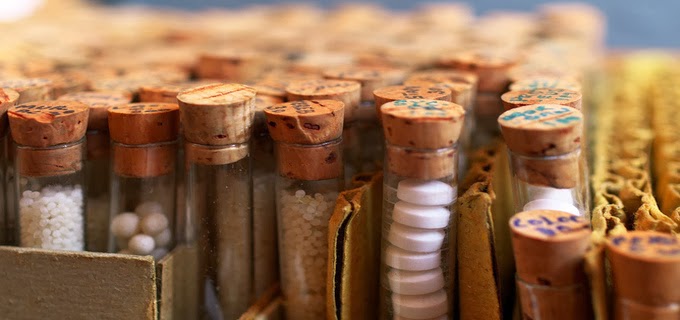This remedy is frequently used in the treatment of heart conditions. When somebody starts to tremble due to
sudden fear, terror or intense grief, Laurocerasus will offer immediate relief.
Its patient starts trembling
when terrified in a dream or on the sudden appearance of a stranger
before him. He becomes overwhelmed with fear when excited. The body becomes
cold and bluish. Sometimes, such a patient may develop epileptic fits. The vision
becomes blurred. Evidently, such a
patient is a coward and weak at heart. Laurocerasus happens to be a
cardio-tonic for such patients. In particular, it is relatively beneficial in
older people. These patients have a weakening of the heart muscle, which
results in accumulation of fluid in the lungs (i.e. pulmonary oedema), and
causes difficulty in breathing. Generally, doctors give such patients inhaler treatment or
strong asthma medicines. These help by relieving the constriction
of their air passages and facilitates breathing for some time. However,
on prolonged use, these medicines lose their effectiveness even
if given repeatedly. The patient may, in fact, die during this attack
of cardiac asthma. Laurocerasus helps to eliminate the need for using
the inhaler. Laurocerasus is a very effective treatment for
combating difficulty in
breathing, (dyspnoea), suffocation, and tightness of the chest as well as
the sudden feeling of being choked and sinking of the
heart. It increases the efficiency of the valves of the heart and is very helpful in the treatment of heart murmurs. It also
tones the heart musculature and thus relieves the backlog of blood in
the lungs and the oedema of the lungs. It is particularly useful in
the treatment of a cough arising from the failing heart which causes congestion of the lungs. Spongia also helps such patients.
The face of a Laurocerasus patient turns bluish (cyanotic) due to the
relative lack of oxygenation of blood in the lungs. Not all of its patients
necessarily become cyanotic. In fact, some have a pale complexion. Such
patients will need a different kind of therapy. Laurocerasus is
famous for the treatment of cyanotic
diseases of the heart. In Laurocerasus, the chest muscles become weak (expiratory muscles). Sometimes, the diaphragm becomes weak and fails to
expel air from the lungs i.e. expiration while breathing in
(inspiration) faces no such difficulty. This type of symptom complex reminds
one of Laurocerasus i.e. the chest muscles continue to help breathing in, though,
breathing out is difficult and laboured.
A Laurocerasus patient feels very cold. Attempts to warm him up externally
do not help either. Sometimes, there is severe
pain in the stomach, so much so that the patient may not even be
able to talk. The muscles on the face
become tight and contracted, giving a grim appearance. Thirst is severe and the
mouth is very dry. Small swellings
form at the nails of the fingers and toes (clubbing of the fingers
related to cyanotic diseases of the heart). There is a feeling of the hips and
ankles being painfully sprained. The fingers become deformed and the dilated
veins become visible on the hands. In
Laurocerasus, drowsiness and
dizziness are not unusual. The patient may also faint. Mental infirmity induces loss of memory. Thoughts are no longer streamlined. Severe headache is
associated with a cool feeling on the forehead. The patient feels very thirsty
but his appetite is lost. The stomach feels contracted and hurts badly. The stools are watery, greenish in colour
and associated with severe griping pain.
The ailments of Laurocerasus subside on sitting down. On
lying down, coughing starts.
There is a feeling of a big ball rolling from the stomach towards the back. On
bending forwards and moving, all the symptoms become aggravated.





